Do you recognize this plant?
Do you know where it’s from and where it grows natively?
Does it have any special uses?
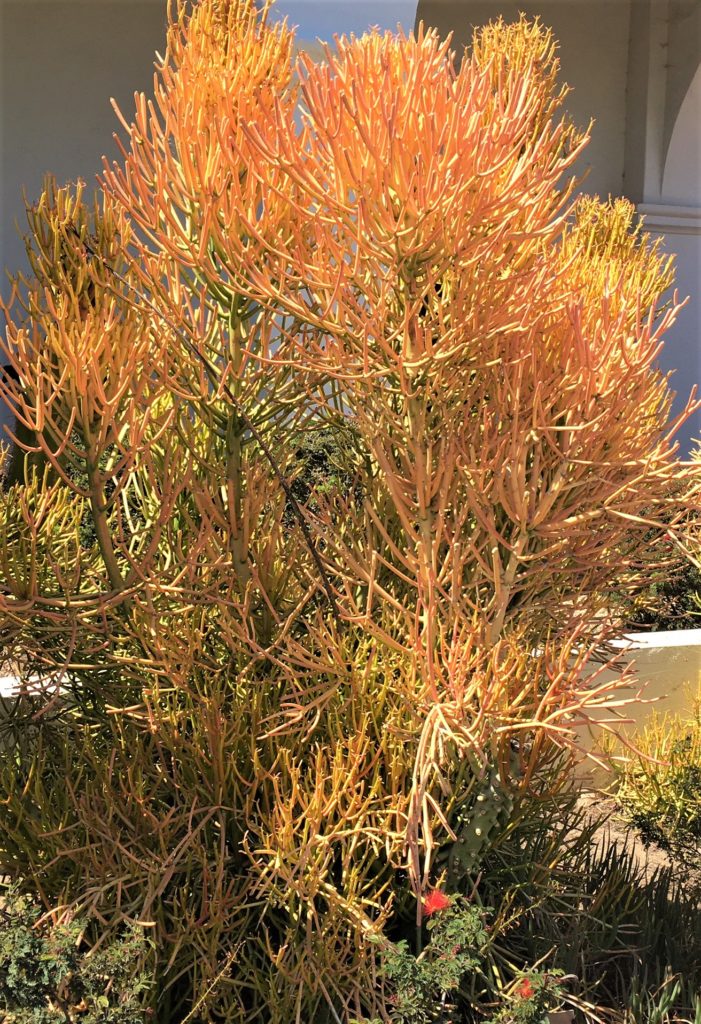
In the almost twenty years I’ve lived in Arizona, I never noticed this plant, until this year. It caught my eye because it doesn’t have “normal” plant leaves or flowers. In fact, to me, it looks more like something that should be growing under the sea – some species of sea coral, perhaps — surrounded not by desert sand but by schools of tropical fish.
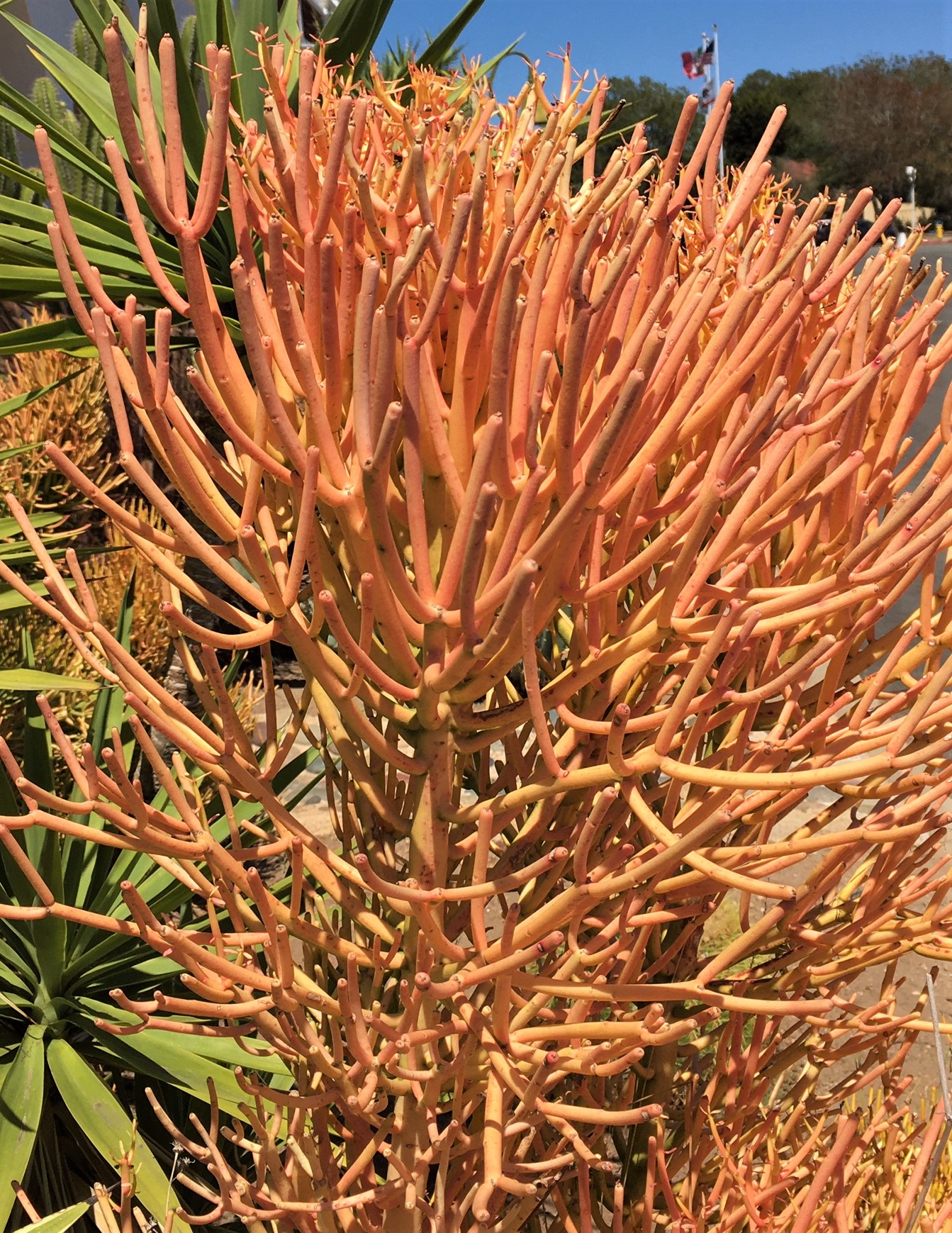
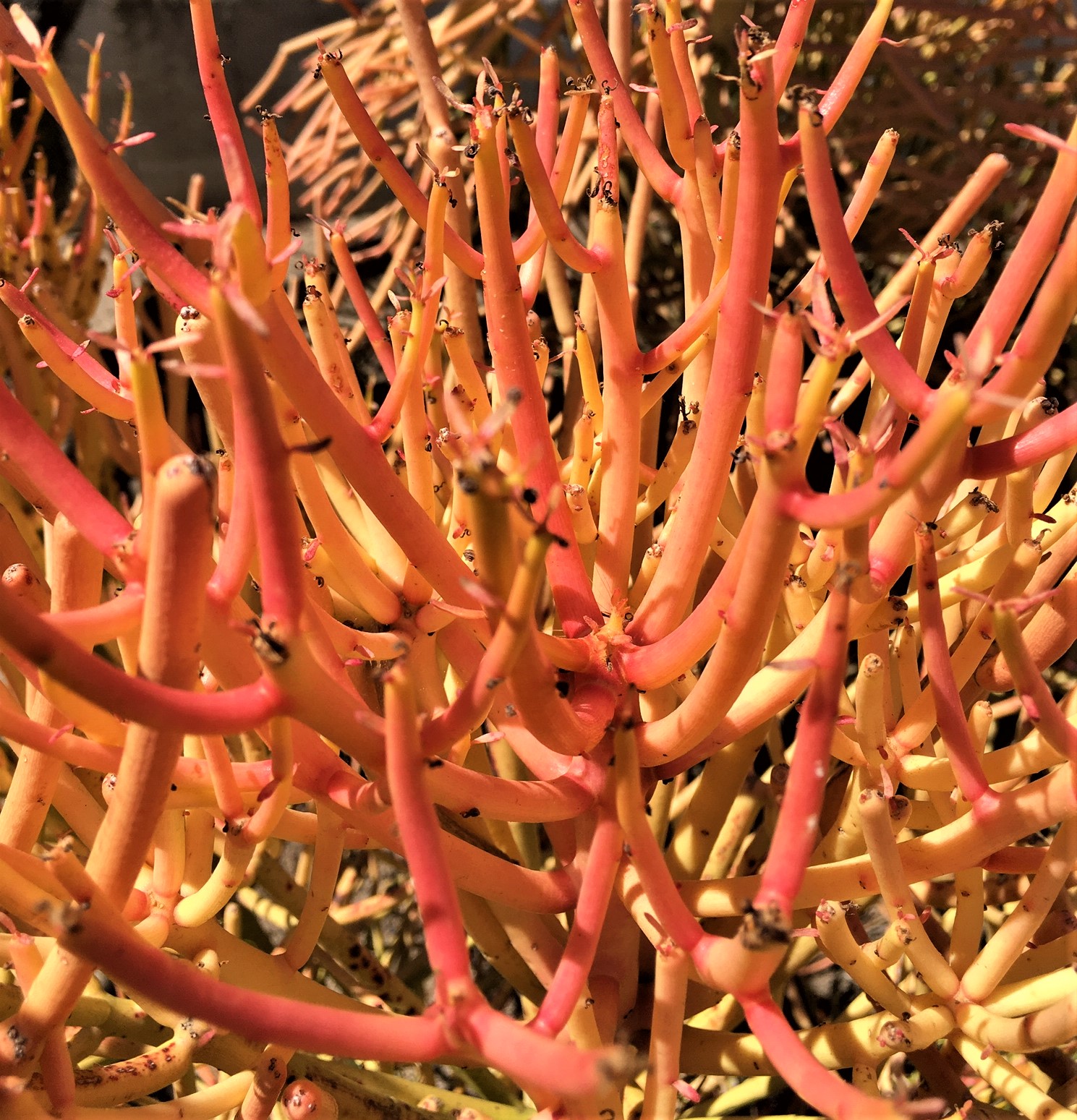
Suddenly, they were everywhere I went, including at Mission San Louis Rey in California – and it was there that I discovered what they are called. This plant is the Firestick Cactus or simply Fire Sticks.
Like most plants, the Firestick also has many other names. It is a member of the spurge family, and its official name is Euphorbia Tirucalli. It is also called the Indian Tree Spurge, the Naked Lady, the Pencil Cactus, and the Milk Bush. They aren’t native to the southwest deserts, but instead are immigrants from eastern and southern Africa, the Arabian Peninsula and India.
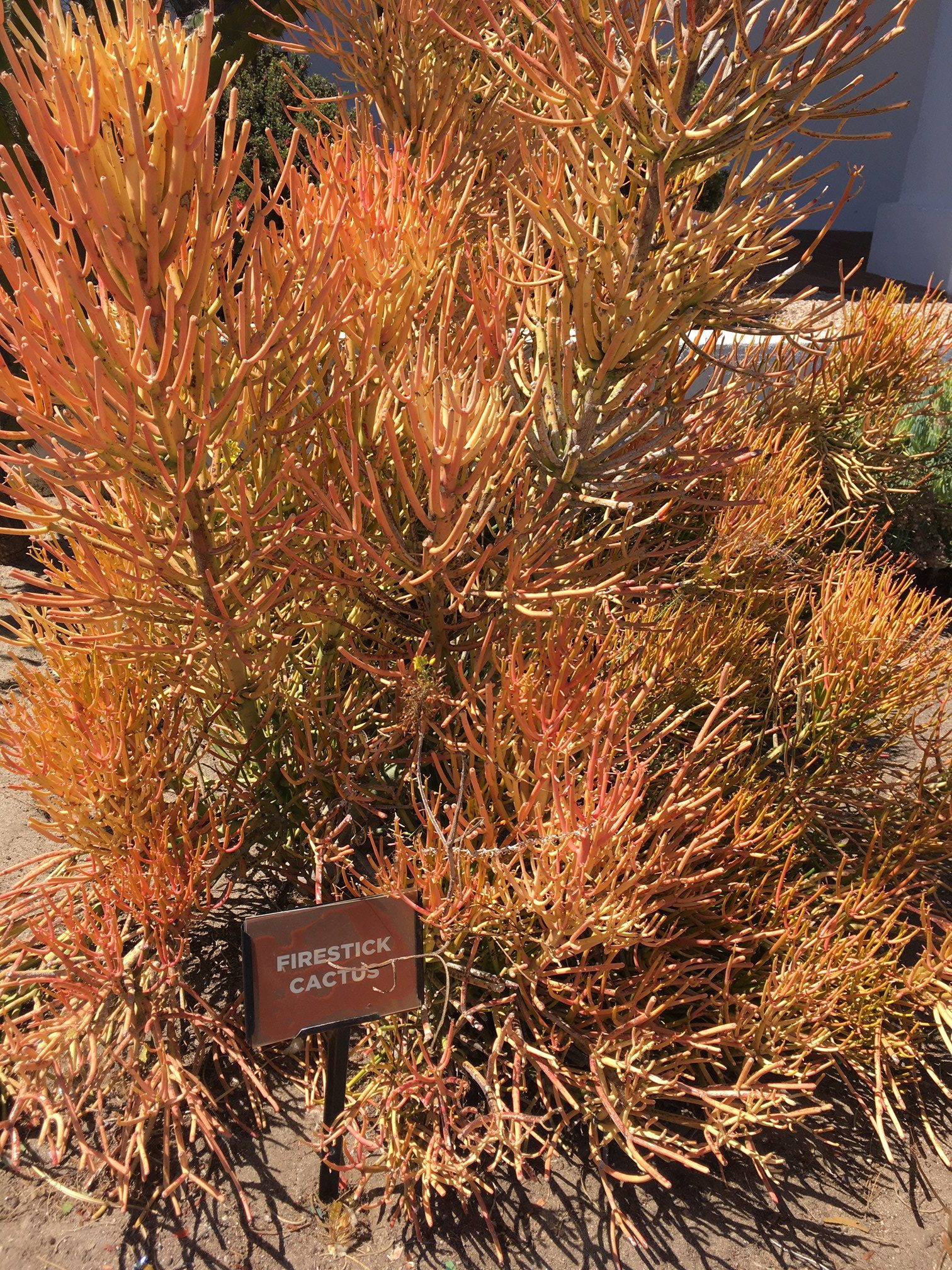
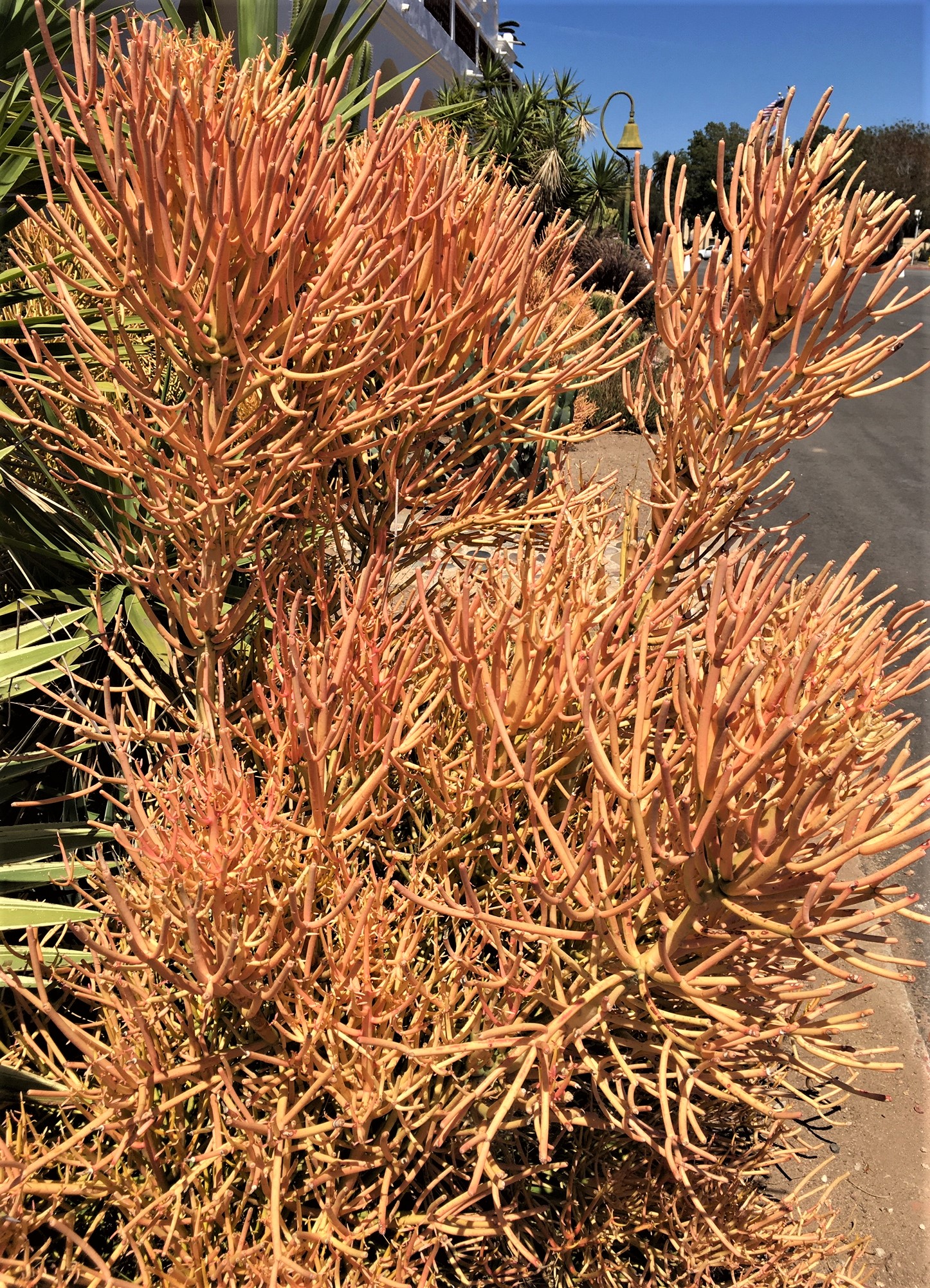
When I found out it was called the Firestick Cactus, I thought to myself, “It looks more like a succulent to me.” And in truth, it is BOTH.
One thing I love about writing the Plant of the Month is that I am continually learning new things, and now I know that while all cacti are succulents, not all succulents are cacti. Succulents is a large family grouping of any plant that can store large amounts of liquid in its leaves, stems, or roots which it uses to stay alive during periods of drought. Cacti are specialized succulents that don’t usually have leaves, normally do have indentations or modified buds in their stems called areoles, and which are usually native only to the New World.
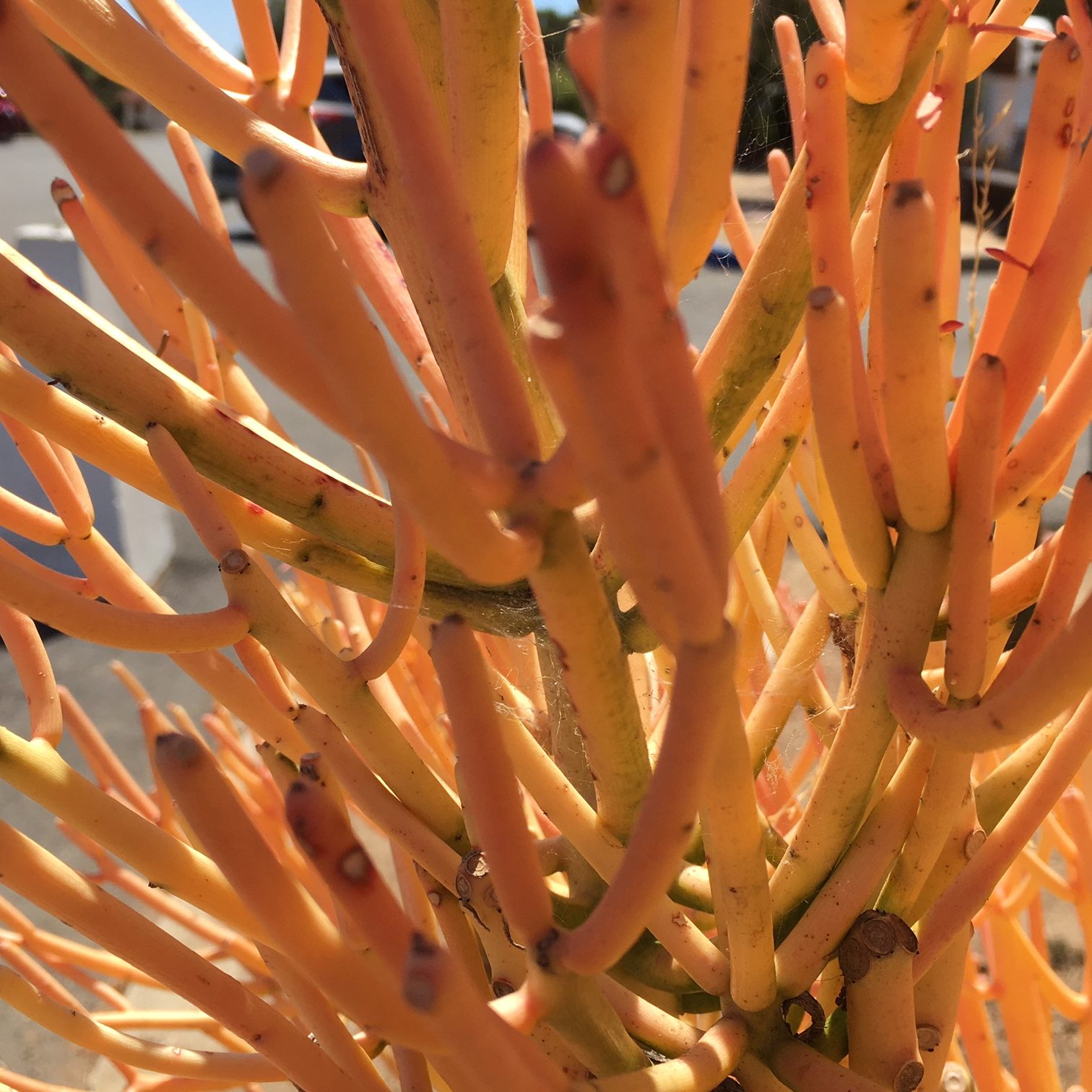
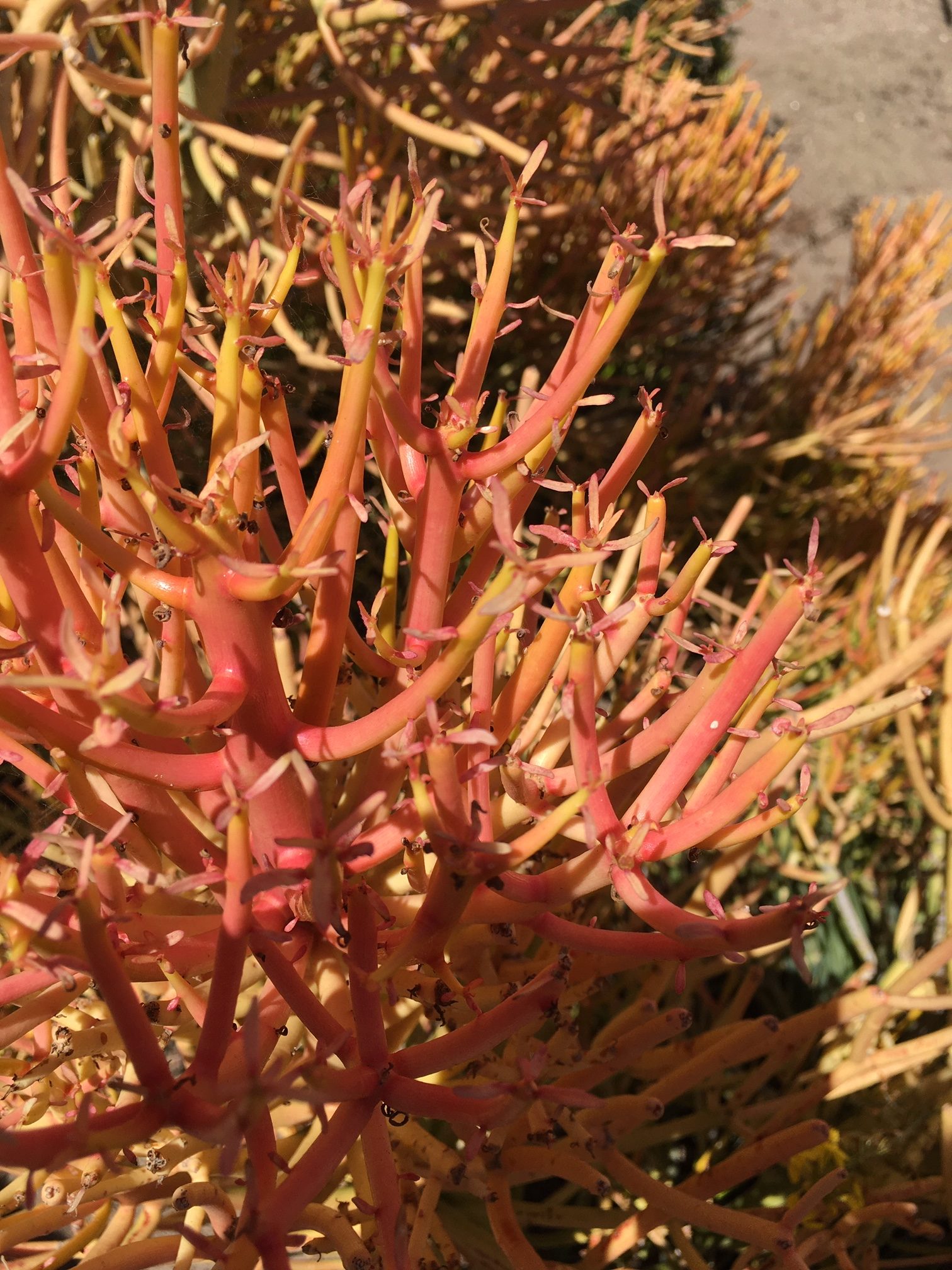
The Firestick Cactus is a popular landscape plant because it is extremely drought tolerant. It also “blooms” in winter. That is, its tops turn red in winter if they are exposed to full sun. One advertisement described them as a “thicket of brilliantly colored, loosely branching vertical stems.”
In the summer, the color fades to yellow or pale yellow. This makes sense for a desert dwelling plant – to conserve energy when water is scarce and to “show off its beauty” when water is plentiful.
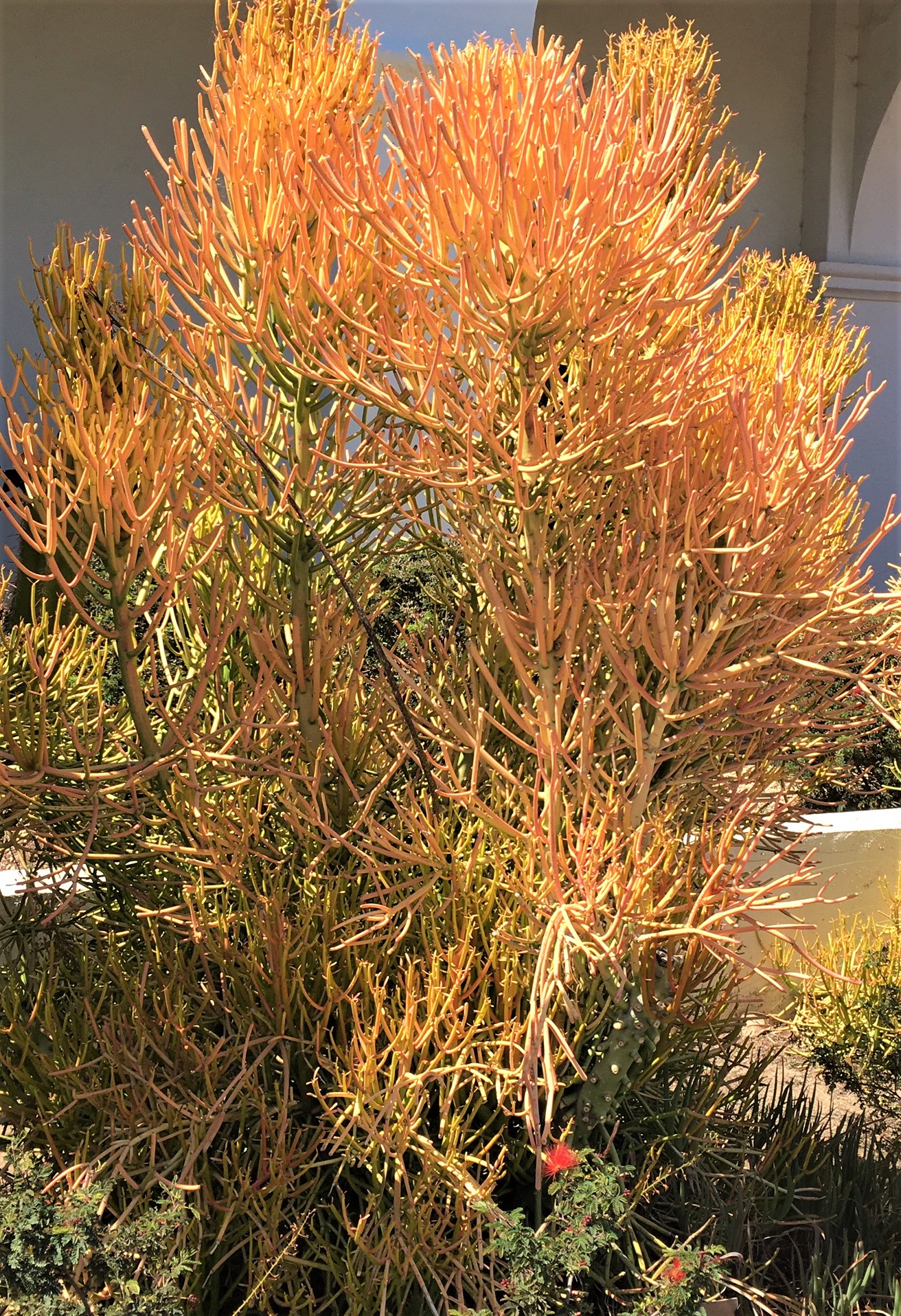
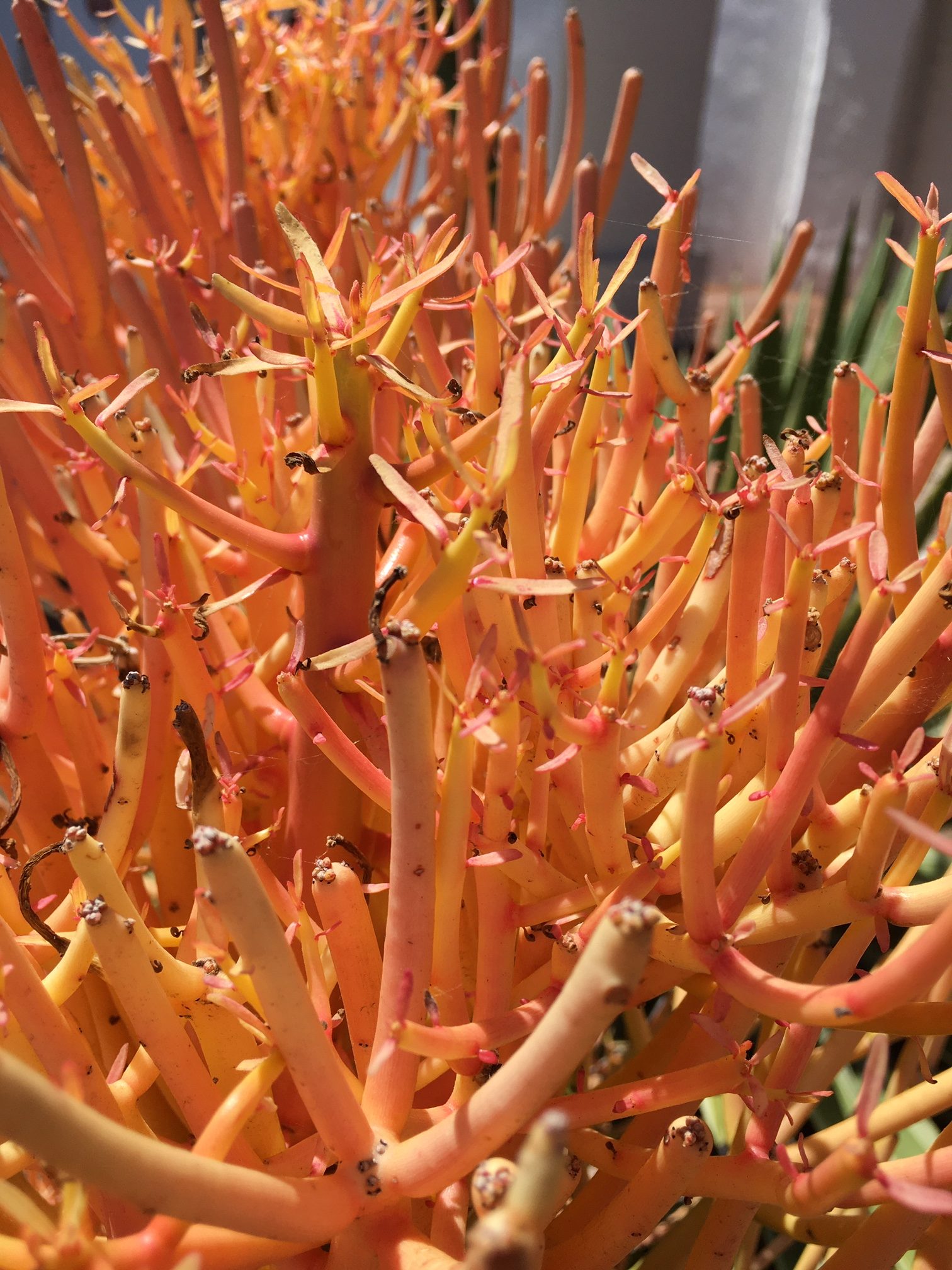
In winter, the Firesticks also put out very tiny leaves. These last only a short period of time before dropping off. Look quickly or you’ll miss them.
Firesticks can grow as tall as twenty feet if they are supported, but typically are four to eight feet in most areas. They are easy to grow and to care for, and they will root from cuttings. They are especially effective visually when planted next to the green or gray green of native cactus.
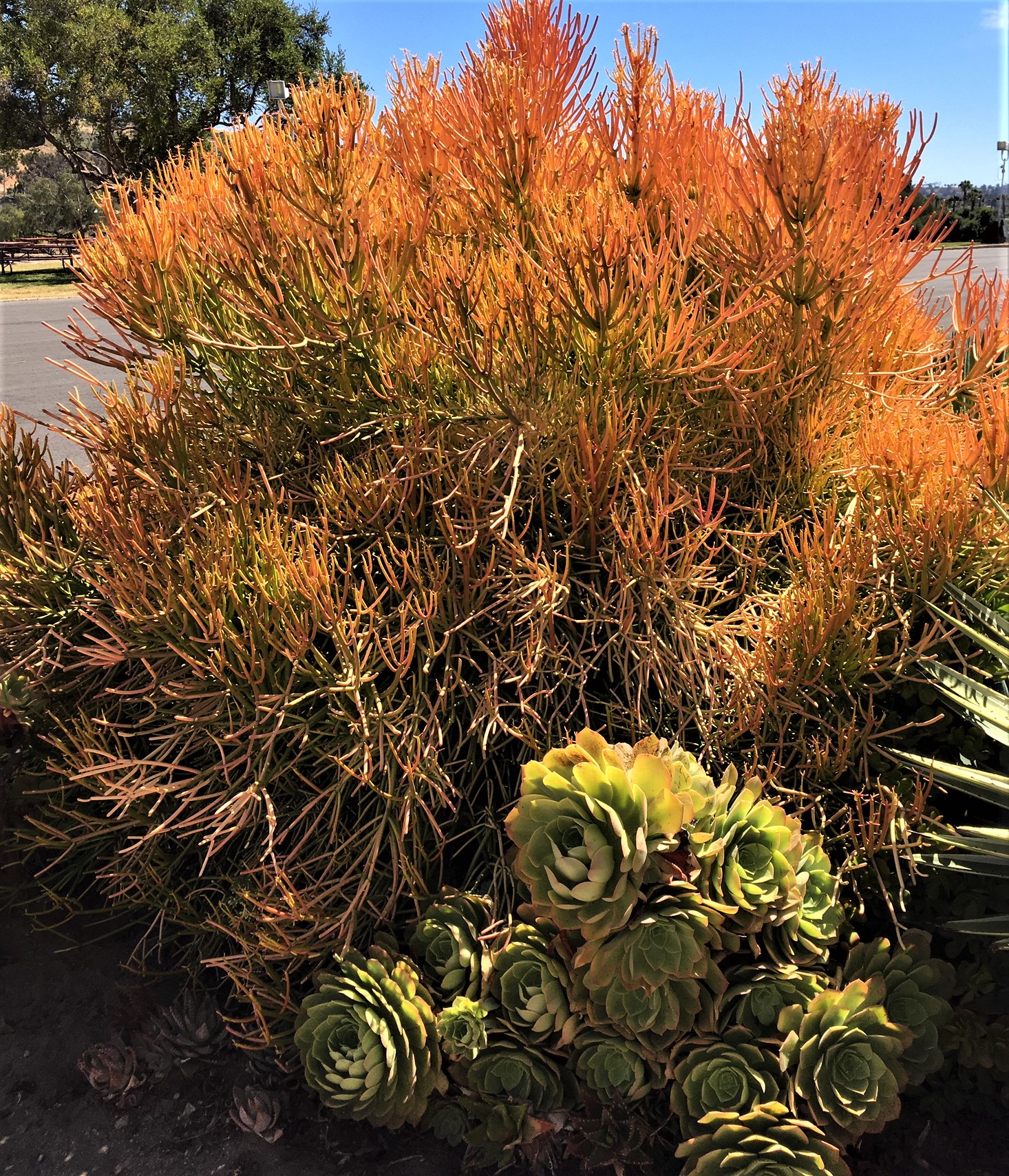
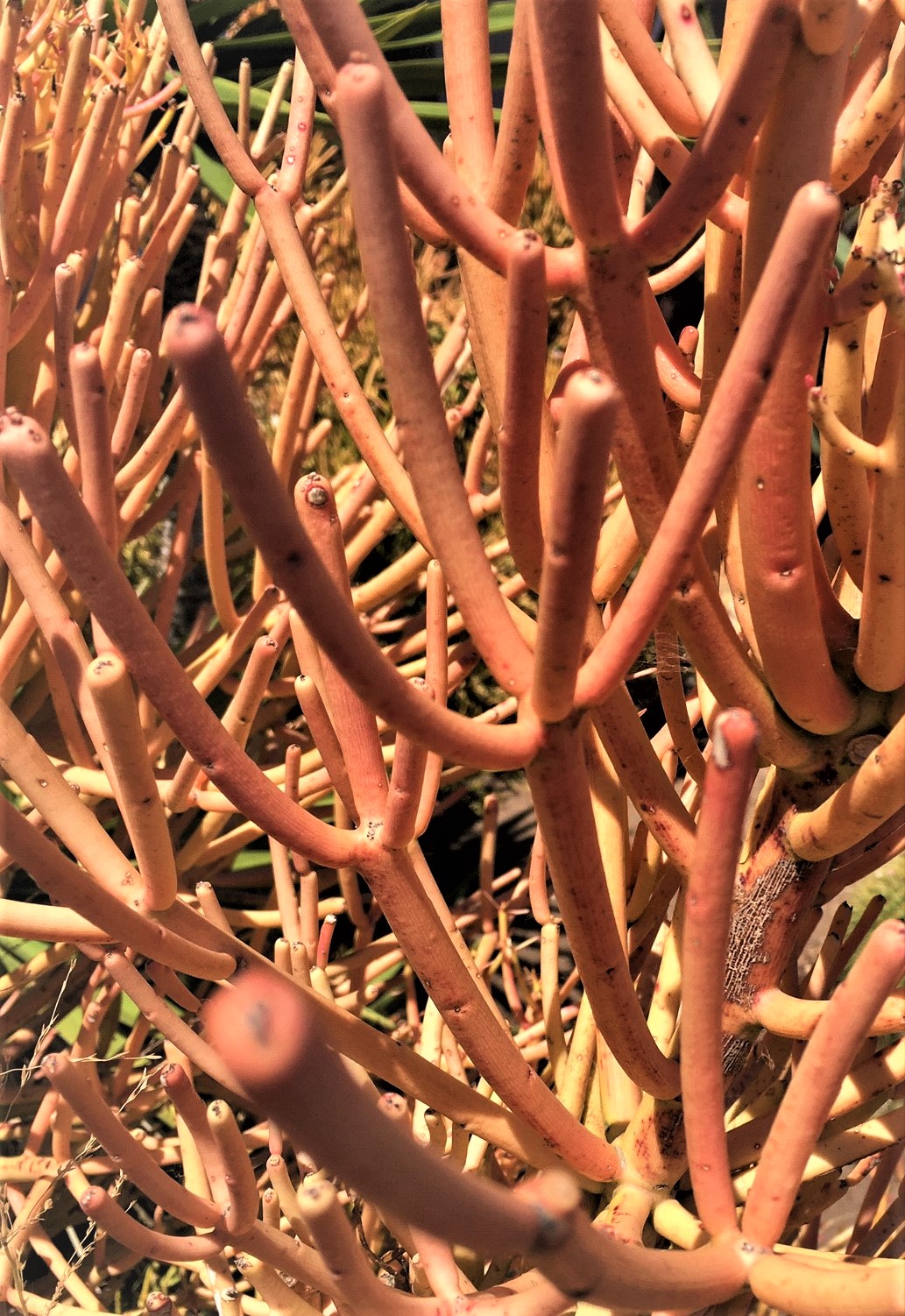
Only one caution – this plant is definitely not edible. Firesticks are extremely toxic if ingested and their milky sap can cause irritation to skin and eyes. If you are pruning or transplanting a firestick, use gloves and goggles. They can also be a safety hazard for dogs and cats, so keep cuttings away from pets. Probably because of their toxicity, they are resilient to most pests and diseases, and they are also deer and rabbit resistant.
Firesticks are even extremely salt tolerant. Maybe they really did evolve from some exotic plant under the sea billions of years ago. It’s a possibility.

